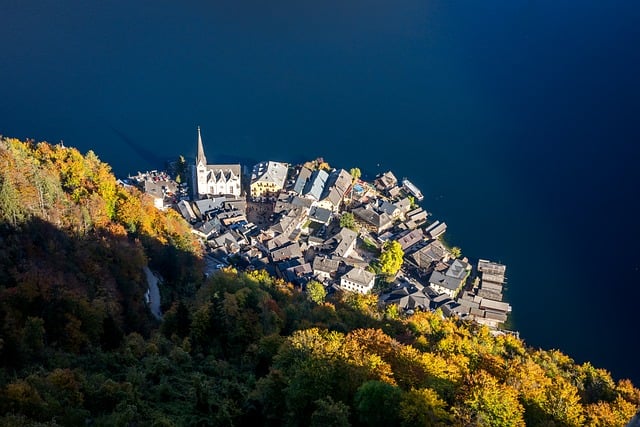Swiss Art and Architecture: A Historical Overview

Switzerland, a country renowned for its breathtaking landscapes, precision engineering, and political neutrality, also boasts a rich and diverse cultural heritage in art and architecture. From the medieval period to contemporary times, Swiss art and architecture have evolved, reflecting the country’s unique geographical position, cultural influences, and historical developments. This article delves into the historical trajectory of Swiss art and architecture, exploring key periods, styles, and influential figures that have shaped the nation’s artistic identity.
1. Medieval Switzerland: Foundations of Swiss Art and Architecture
The roots of Swiss art and architecture can be traced back to the medieval period, a time when the region was deeply influenced by the Romanesque and Gothic styles that dominated Europe. During this era, Switzerland was not yet a unified nation but a collection of cantons and territories under the influence of the Holy Roman Empire and neighboring powers.
Romanesque Architecture (10th–12th Centuries)
Romanesque architecture in Switzerland is characterized by its robust and austere design, with thick walls, small windows, and rounded arches. Churches and monasteries were the primary architectural achievements of this period. One of the most notable examples is the Abbey of Saint Gall, a UNESCO World Heritage Site. Founded in the 8th century, the abbey’s library is a treasure trove of medieval manuscripts, showcasing the intellectual and artistic achievements of the time.
Gothic Architecture (12th–16th Centuries)
The Gothic style, with its pointed arches, ribbed vaults, and flying buttresses, found its way into Switzerland during the late medieval period. The Cathedral of Lausanne is a prime example of Gothic architecture in Switzerland. Its intricate façade, stunning rose window, and towering spires reflect the grandeur and spiritual fervor of the era. Gothic art also flourished in the form of illuminated manuscripts, stained glass, and religious sculptures.
2. Renaissance and Baroque: A Flourishing of Swiss Art
The Renaissance and Baroque periods marked a significant shift in Swiss art and architecture, as the country began to absorb influences from Italy, France, and Germany. This era saw the emergence of more secular themes, humanism, and a focus on individualism.
Renaissance Art (15th–16th Centuries)
During the Renaissance, Swiss artists began to explore new techniques and perspectives, influenced by the Italian masters. One of the most prominent figures of this period was Hans Holbein the Younger, a German-Swiss painter known for his portraits and religious works. Holbein’s meticulous attention to detail and realistic portrayal of his subjects made him one of the most celebrated artists of his time.
Swiss Renaissance architecture, though less prominent than its Italian counterpart, featured symmetrical designs, classical elements, and ornate decorations. The Town Hall of Basel is a fine example, blending Gothic and Renaissance styles.
Baroque Art and Architecture (17th–18th Centuries)
The Baroque period brought a sense of drama, movement, and opulence to Swiss art and architecture. Churches and palaces were adorned with elaborate frescoes, stucco work, and gilded decorations. The Einsiedeln Abbey, a Benedictine monastery, is a masterpiece of Baroque architecture. Its lavish interior, designed by renowned artists and architects, reflects the grandeur of the Catholic Counter-Reformation.
Swiss Baroque painting also flourished, with artists like Johann Heinrich Füssli (Henry Fuseli) gaining international recognition. Füssli’s works, characterized by their dramatic and often fantastical themes, bridged the gap between the Baroque and Romantic movements.
3. The 19th Century: Romanticism and National Identity
The 19th century was a transformative period for Swiss art and architecture, as the country sought to define its national identity following the establishment of the Swiss Confederation in 1848. This era was marked by the rise of Romanticism, which celebrated Switzerland’s natural beauty and cultural heritage.
Romanticism in Swiss Art
Swiss Romantic artists were deeply inspired by the country’s majestic Alps, pristine lakes, and picturesque villages. Caspar Wolf, a pioneer of Alpine landscape painting, captured the sublime beauty of the Swiss mountains in his works. His paintings not only showcased the natural wonders of Switzerland but also contributed to the growing tourism industry.
Another notable figure was Albert Anker, whose works depicted everyday life in rural Switzerland. Anker’s realistic and heartfelt portrayals of Swiss villagers earned him the title of “national painter.”
Architecture in the 19th Century
The 19th century saw a revival of historical architectural styles, including Neo-Gothic and Neo-Renaissance. The Federal Palace of Switzerland in Bern, completed in 1902, is a prime example of this trend. Its grand design, featuring a central dome and ornate decorations, symbolizes the unity and strength of the Swiss Confederation.
4. Modern and Contemporary Swiss Art and Architecture
The 20th and 21st centuries witnessed a dramatic shift in Swiss art and architecture, as the country embraced modernism and avant-garde movements. Swiss artists and architects gained international acclaim for their innovative and minimalist approaches.
Modern Art
Swiss modern art was heavily influenced by movements such as Dadaism, Surrealism, and Concrete Art. The Dada movement, founded in Zurich in 1916, was a radical response to the horrors of World War I. Artists like Hans Arp and Sophie Taeuber-Arp played pivotal roles in challenging traditional artistic norms and exploring new forms of expression.
In the mid-20th century, Swiss Concrete Art emerged, emphasizing geometric abstraction and precision. Artists like Max Bill and Richard Paul Lohse were at the forefront of this movement, creating works that reflected Switzerland’s reputation for precision and order.
Modern and Contemporary Architecture
Swiss architecture in the modern era is characterized by its functionality, simplicity, and attention to detail. Le Corbusier, one of the most influential architects of the 20th century, was born in Switzerland. His innovative designs, such as the Villa Savoye in France and the Unité d’Habitation, revolutionized modern architecture.
In contemporary times, Swiss architects like Herzog & de Meuron have gained global recognition for their groundbreaking designs. The Tate Modern in London and the Beijing National Stadium (Bird’s Nest) are testaments to their creativity and ingenuity.




